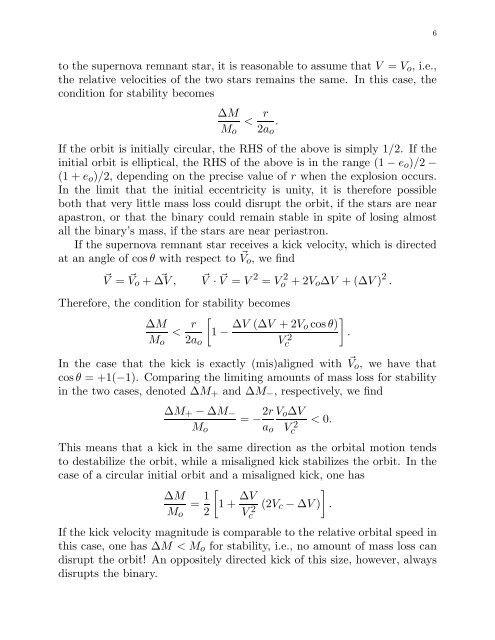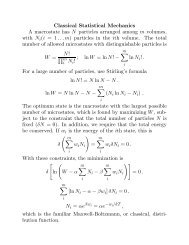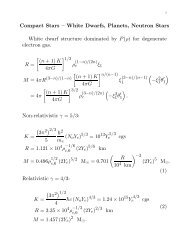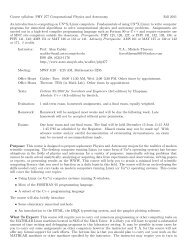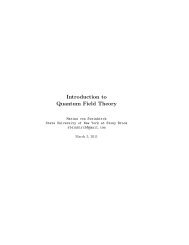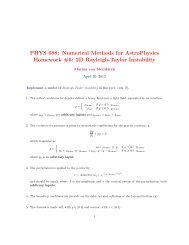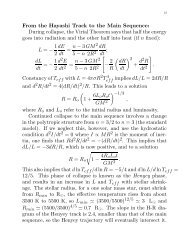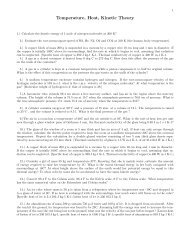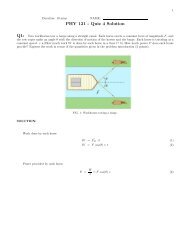You also want an ePaper? Increase the reach of your titles
YUMPU automatically turns print PDFs into web optimized ePapers that Google loves.
6<br />
to the supernova remnant star, it is reasonable to assume that V = V o , i.e.,<br />
the relative velocities of the two stars remains the same. In this case, the<br />
condition for stability becomes<br />
∆M<br />
M o<br />
< r<br />
2a o<br />
.<br />
If the orbit is initially circular, the RHS of the above is simply 1/2. If the<br />
initial orbit is elliptical, the RHS of the above is in the range (1 − e o )/2 −<br />
(1 + e o )/2, depending on the precise value of r when the explosion occurs.<br />
In the limit that the initial eccentricity is unity, it is therefore possible<br />
both that very little mass loss could disrupt the orbit, if the stars are near<br />
apastron, or that the binary could remain stable in spite of losing almost<br />
all the binary’s mass, if the stars are near periastron.<br />
If the supernova remnant star receives a kick velocity, which is directed<br />
at an angle of cosθ with respect to ⃗ V o , we find<br />
⃗V = ⃗ V o + ⃗ ∆V , ⃗ V · ⃗ V = V 2 = V 2 o + 2V o ∆V + (∆V ) 2 .<br />
Therefore, the condition for stability becomes<br />
∆M<br />
< r [<br />
1 − ∆V (∆V + 2V ]<br />
o cos θ)<br />
M o 2a o Vc<br />
2 .<br />
In the case that the kick is exactly (mis)aligned with ⃗ V o , we have that<br />
cos θ = +1(−1). Comparing the limiting amounts of mass loss for stability<br />
in the two cases, denoted ∆M + and ∆M − , respectively, we find<br />
∆M + − ∆M −<br />
M o<br />
= − 2r<br />
a o<br />
V o ∆V<br />
V 2 c<br />
< 0.<br />
This means that a kick in the same direction as the orbital motion tends<br />
to destabilize the orbit, while a misaligned kick stabilizes the orbit. In the<br />
case of a circular initial orbit and a misaligned kick, one has<br />
∆M<br />
M o<br />
= 1 2<br />
[<br />
1 + ∆V<br />
V 2 c<br />
]<br />
(2V c − ∆V ) .<br />
If the kick velocity magnitude is comparable to the relative orbital speed in<br />
this case, one has ∆M < M o for stability, i.e., no amount of mass loss can<br />
disrupt the orbit! An oppositely directed kick of this size, however, always<br />
disrupts the binary.


